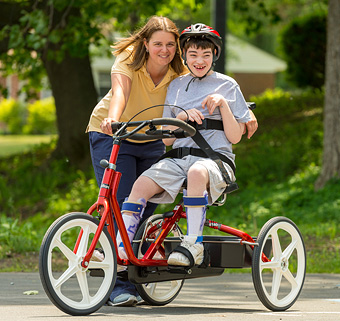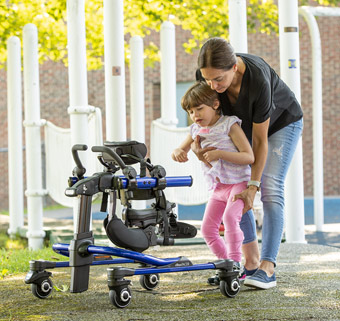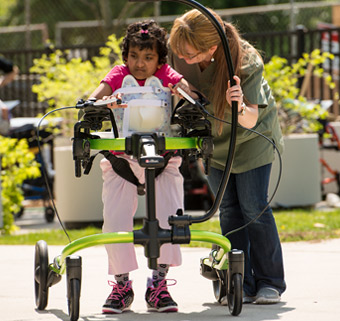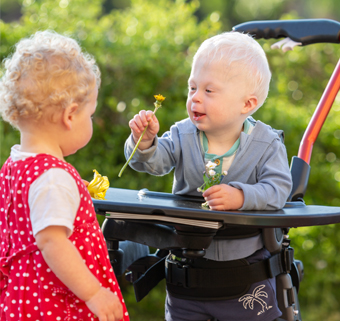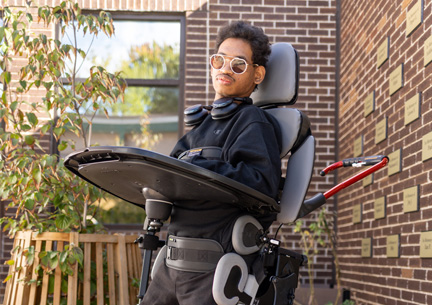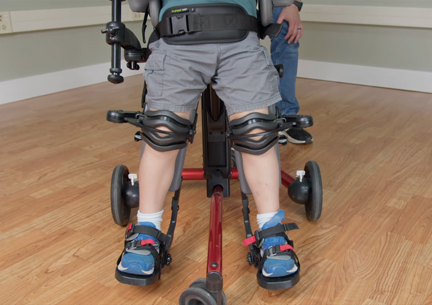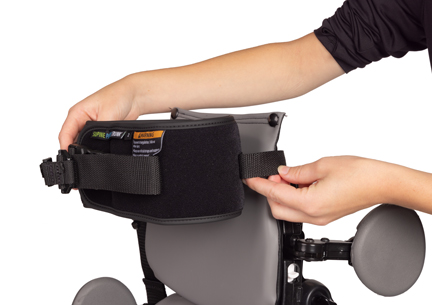Evidence Update: Long-Term Benefits of Abducted Standing in Children with Cerebral Palsy
| April 2021 Non-ambulatory children with cerebral palsy are at risk for hip displacement because of strong adduction, flexion and internal rotation muscle forces at the hip. Available research points to the benefits of standing in abduction to prevent hip migration and subsequent dislocation. A recent study in the Pediatric Physical Therapy Journal further adds to this current knowledge base.
Non-ambulatory children with cerebral palsy are at risk for hip displacement because of strong adduction, flexion and internal rotation muscle forces at the hip. Available research points to the benefits of standing in abduction to prevent hip migration and subsequent dislocation. A recent study in the Pediatric Physical Therapy Journal further adds to this current knowledge base.
This study draws data from the Swedish CPUP (Cerebral Palsy Uppfoljning) register, a hip surveillance program following children with CP in Sweden from birth to adulthood. Children chosen for the study were between three and seventeen years old, classified in GMFCS level IV or V, and using a standing frame ten hours per week at fifteen degrees to thirty degrees abduction for each leg. They were further divided into two groups: one in which participants had adductor-psoas tenotomy surgery and the other which participants did not. The control group performed abducted standing at zero degrees to ten degrees for each leg and were matched on age and surgery category.
Over the course of seven years, all the children who stood for a total of ten hours per week at fifteen degrees to thirty degrees hip abduction showed a reduction in hip migration percentage, regardless of the surgery category. The greatest reduction in hip migration percentage (eighteen percent) was in the group that performed abducted standing after having surgery. An additional finding of the study group was that range of motion at the hip and knee was maintained.
On the other hand, migration percentage in the control groups increased.
Hip surveillance and intervention for non-ambulatory children with CP is a work in progress, but certainly, abducted standing is effective – at least up to seven years as measured in the study. So providing children with optimal time in adaptive standers with abduction during the day contributes to these positive outcomes.
Reference
- Martinsson C, Himmelmann K. Abducted standing in children with cerebral palsy: Effects on hip development after 7 years. Pediatr Phys Ther. 2021;33:101-7.
